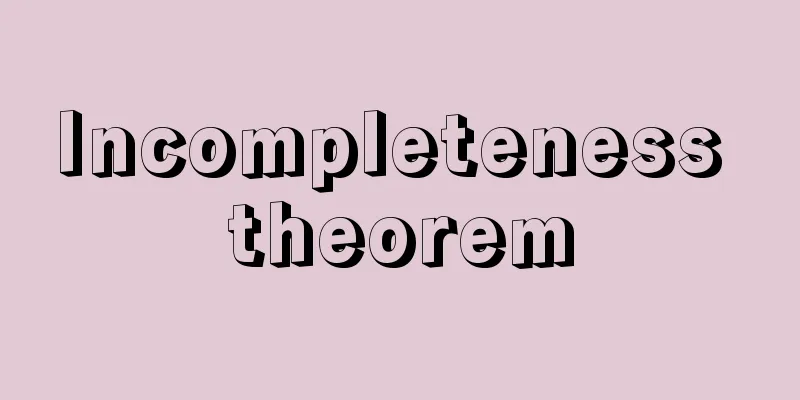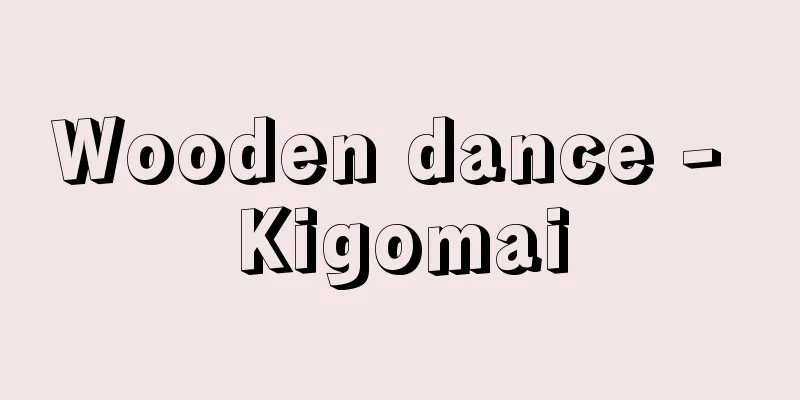Japanese Music

DefinitionThe term "Japanese music" is used in a variety of different ways depending on the situation, so it is not enough to simply say "Japanese music." Japanese music should be understood first and foremost as "music as part of Japanese culture," but even so, there is a wide range of interpretations. In the broadest sense, it can also include Western music in Japan today. However, the most commonly used definition is the narrowest, excluding Western music, and referring to music that has a tradition that dates back to before the start of the modern import of Western music, or that is rooted in that tradition. Western music is excluded because it is also a product of Western culture, and its norms are still in the West. Here, we will adopt the narrowest definition, which is the more commonly used definition. From this perspective, there are three conditions that must be met for a musical style to be considered Japanese music: (1) that style must have been practiced in Japan for a fairly long period of time, (2) that style must have undergone some sort of unique development during that time, and (3) that it must be perceived with a Japanese sensibility and be felt as something unique to Japan. In the following sections, we will discuss Japanese music that meets these three conditions, with a focus on classical music in particular. In the modern era, various music styles that combine Japanese and Western elements have appeared. Although these styles are uniquely Japanese, their appearance is still fluid, so it is difficult to include them in the narrow definition of Japanese music. This article will only discuss modern and contemporary Japanese music. In addition, music from the Nansei Islands, particularly Okinawa, and music from northern minority groups are not considered to be part of the narrow definition of Japanese music, and will not be covered here. [Kamisango Yuyasu] SynonymsSynonyms for Japanese music include Hogaku, traditional Japanese music, and classical Japanese music. The term Hogaku, which is most commonly used in daily life, is equivalent to Japanese music in the broad sense, but in the narrow sense it refers only to music that was created in the early modern period and had a recreational character, excluding gagaku, chanting, Noh, and folk music. In official situations, the broad sense is more common, but in everyday life, the narrow sense is more common. When emphasizing the narrow sense, it is called early modern Hogaku. In a broad sense, traditional Japanese music (or traditional music for short) is synonymous with Japanese music, but it is often called simply Japanese music to avoid the stiff connotation of the term. In a narrower sense, it may exclude new works created after the Meiji period. The meaning of Japanese classical music is even narrower, referring to traditional Japanese music in the narrow sense excluding folk music. [Kamisango Yuyasu] The nature of speciesThere are many kinds of Japanese music, but each kind exists separately and independently. This is because there are few commonalities between the different kinds in terms of scales, melody, rhythm, musical form, vocalization, instruments, musical scores, performance style, venues, and people involved (composers, performers, and listeners), and each kind stands out as unique. There are also many kinds of Western music, but in the above-mentioned points, each kind has a strong commonality, and the whole is considered as one music. In contrast, the kinds of Japanese music tend to exist individually, and there is little sense of unity as music. In fact, it was only after the Meiji period, when Western music began to be imported, that the consciousness of generalizing the whole under the name of music emerged. Figuratively speaking, Western music is a nation with the same ethnicity and the same language, while Japanese music is a nation of many ethnicities and languages, and has the image of a federation of many republics, each of which has a strong sense of independence. Therefore, in order to understand Japanese music as a whole, it is essential to first recognize the existence of each kind. Japanese music as a whole, excluding modern and contemporary Japanese music, whose style has yet to be determined, can be broadly divided into two types: classical music and folk music. [Kamisango Yuyasu] Types of classical musicThe overall characteristics of classical music include its normative transmission by experts, its emphasis on master-disciple relationships, its tendency to be urban-centered and its widespread popularity, and its character as an art of appreciation or recreation, which contrast with folk music in these respects. Classical music is divided into many genres and schools. A genre is a classification based mainly on differences in style, and many are also related to the historical circumstances of their origin and differences in the main instruments used. A ryuha is a term that combines a style (also called a school) and a school. The distinction between a style and a school is subtle, but as a tentative definition, a style is a difference in the artistic style within a genre, and a school is a subcategory that is a difference in the traditional lineage within a style. The iemoto system is usually established with a school or school as a unit. The boundaries between the three stages of classification (genre, school, and school) are not necessarily clear, as there are cases where the differences in artistic style at the time a school was established increased and eventually became similar to differences in style, or where differences in artistic style arose due to differences in the lineage of tradition between schools. Therefore, classification by genre and school cannot be said to be a scientific classification based on strict standards, but it is useful for understanding classical music as a whole, as it is commonly used and familiar in everyday life, and the close relationships between types are easy to understand. It goes without saying that in the history of music there have been many genres and schools that have already been lost. [Kamisango Yuyasu] History of Classical MusicLooking at the history of Japanese music, we can see two periods of national-scale intake of foreign music (continental and Western music): from the 5th to 8th centuries and from the late 19th to 20th centuries. In the intervening period of about 10 centuries, we can see the Japanization of continental music and the rise and development of Japan's unique folk music. From this perspective, the history of Japanese classical music is divided into six periods and briefly described below. Generally in the history of Japanese music, new genres and schools emerge as offshoots of older ones, and it is common for the two to continue to coexist without the new driving out the old. In this respect, it contrasts with the history of Western music, in which new styles replace the old. If the history of Western music can be called a period of revolutionary change, then the history of Japanese music can be called a period of cell-division change. The following descriptions are arranged by era, but in order to make them easier to understand, in some cases the subsequent changes made to the discipline or school are also mentioned at the time of their establishment. [Kamisango Yuyasu] 1st PeriodPrimitive folk music period (?-4th century): This was the period before music was introduced to the continent. Due to a lack of documentation, the actual situation is unclear, but we can learn a little from documents such as the Kojiki, the Fudoki, and the Manyoshu, as well as from clay figurines. Music of this period was centered on songs (vocal music), and many were linked to religious services, agricultural ceremonies, and folk events (such as utagi). The original forms of the various pieces of kokufu kabu (traditional Japanese dance) that would later be included in gagaku (traditional court music) also emerged during this period. Musical instruments such as koto, hue, and tsuzumi are known to exist, but these Japanese names for instruments were originally general terms for stringed instruments, wind instruments, and percussion instruments, respectively, so their individual characteristics are unclear. The existence of the five-stringed, planar koto (the original form of the wagon) has been confirmed through clay figurines and other objects. [Kamisango Yuyasu] Second PeriodThe period when music was imported from the continent (5th to 8th centuries) This corresponds to the Yamato, Asuka, and Nara periods. Various kinds of music were imported from developed countries on the continent. The introduction of music from the Korean Peninsula began around the middle of the 5th century, and by the middle of the 7th century, Silla music, Baekje music, Goryeo music (collectively known as the Three Kingdoms music), and Gigaku had been introduced. The direct import of Chinese culture began with the dispatch of Japanese envoys to the Tang Dynasty, and Tang music and dance such as Tang music, San music, and Toka were also introduced by the end of the 7th century, followed by the introduction of Dora music (origin unknown), Lin'yū music (origin in India), and Bohai music in the 8th century. These continental musics were actively imported at the request of the state as part of the intake of culture from advanced countries. The Taiho Code of 701 (Taiho 1) established the Gagaku-ryo (an office in charge of music), appointed musicians to the imperial court, and established a court music system that included both Japanese music and various foreign music. Todaiji and other large temples also appointed musicians to perform music for religious ceremonies. Shomyo, vocal music for Buddhist ceremonies, was also introduced during this period and was performed at various temples in Nara. The consecration ceremony for the Great Buddha of Todaiji Temple in 752 (Tenpyo-Shoho 4) was a large memorial service attended by several hundred monks from the various large temples, and various foreign music and dances were performed as memorial services, along with shomyo, by the Gagaku-ryo and several hundred musicians from the various temples. It is also said that the Moso Biwa was introduced to Japan during this period. This is a type of Buddhist music in which blind monks recite sutras while playing the biwa, and it seems to have been performed in Honshu up until the Kamakura period, but was later limited to the Kyushu region, with the two main lineages being the Satsuma Moso Biwa and the Chikuzen Moso Biwa (there are also other types such as Higo Biwa), both of which are sects of the Tendai sect, and are still performed today. [Kamisango Yuyasu] Third PeriodThe period of assimilating continental music (9th to 12th centuries) corresponds to the entire Heian period (late ancient period). The import of continental culture came to a halt with the abolition of Japanese envoys to the Tang Dynasty (894), and the continental culture imported in the earlier period was gradually domesticated, with various imported music styles being reorganized and Japanized in various ways. The most important music styles in this period were gagaku and shomyo. In gagaku, the instrument arrangements and sound structures of imported music were first streamlined and the scale was reduced. As a result, the detailed distinctions between the imported music based on the country of origin were lost and it was divided into two major categories: Left Tang Music (including Lin'yi music in the previous Tang music) and Right Goryeo Music (including Bohai music in the Three Kingdoms music). New Japanese compositions in this style appeared, and imported music and dance became completely unique to Japan in both style and repertoire. Traditional Japanese music (national style songs and dances) was also reorganized under the influence of imported music, and two vocal styles (saibara and roei) accompanied by imported instruments were also created. The collective name for all these musical styles is gagaku, which reached its peak around the end of the 10th century. During the Heian period, gagaku flourished as music for ceremonies and events at the imperial court and temples and shrines, and as a form of cultural entertainment for the aristocracy. It declined after the imperial court and aristocracy lost their power, but its traditions were preserved, albeit in small ways, through hereditary succession among musicians attached to the imperial court and large shrines and temples. During the Edo period, it enjoyed a lull under the protection of the shogunate, and was revived as court music once again with the Meiji Restoration. Some genres, such as heikyoku (traditional Japanese music) and sokyo (traditional Japanese harp), originated from gagaku, and gagaku has had a great influence on various later genres. In the late Heian period, Imayo (modern Japanese folk music) was popular as a form of popular song, and some of these songs, such as Etenraku Imayo, were written to the tune of gagaku instruments. The Ryōjin Hishō (Ryōjin Hishō), compiled by Emperor Goshirakawa, is a famous collection of Imayo lyrics. The Tendai and Shingon sects, newly introduced in the early Heian period, became the two major branch lines of chanting, and Japanization also began during this period. Sanskrit and Chinese chanting (Bonsan, Kansan, etc.) that had been introduced from China were passed down as is, but in addition, various types of chanting music in Japanese that could be understood by Japanese people (Wa-san, Ko-shiki, Rongi, Saimon, etc.) were created. The various sects that emerged and were introduced later, such as Jodo, Jodo Shinshu, Rinzai, Soto, Nichiren, Ji, and Obaku, also absorbed the chanting of Tendai and Shingon, adding their own innovations to it, and each came to have their own unique chanting, and chanting diversified and became a uniquely Japanese form of Buddhist vocal music. The above-mentioned types of music are still performed today by various sects. However, the traditions are fluid, and there have been various changes since the Middle Ages, and even in modern times there are cases where conscious revisions and unconscious changes have been made. There has also been a great influence on other genres of shomyo since the Middle Ages. While gagaku is the origin of Japanese music in terms of instrumental music, shomyo can be said to be the origin of vocal music. [Kamisango Yuyasu] 4th PeriodThe period of rise of folk music (13th to 16th centuries) This corresponds to the Kamakura, Muromachi, and Azuchi-Momoyama periods, that is, the Middle Ages. With the advent of the age of samurai government, aristocratic culture declined, while the culture of the samurai and common people, as well as local culture, rose to prominence. The types of music that were established during this period include Heikyoku, Souka, Kusemai, Dengaku, Sarugaku (Noh), Joruri, Tsukushigoto, Hitooyogiri Shakuhachi, and Muromachi Kota. There were many types of folk vocal music based on the Japanese language, especially storytelling. The sanxian was introduced to Japan at the end of this period. Heikyoku is music performed to the accompaniment of the biwa, and its lyrics are essentially "The Tale of the Heike." It first emerged in the early 13th century, based on the blind monk biwa and influenced by gagaku and shomyo, and was established at the end of the 14th century. Since the establishment of the professional association of biwa priests, "Todo," in the 14th century and receiving official recognition from the Muromachi Shogunate, Heikyoku has been passed down exclusively as a specialized art by blind musicians of Todo. Todo continued to exist in the Edo period, recognized by the Tokugawa Shogunate, but jiuta and sokyoku replaced Heikyoku as the de facto specialized arts of blind musicians, and the transmission of Heikyoku as a nominal specialized art gradually weakened, and today it is passed down only by a very small number of people. Hayauta is an unaccompanied form of recitation that was perfected by a monk named Myokyu at the end of the 13th century. It was loved by the upper classes, including nobles, samurai, and monks, and flourished through the 14th century, but fell into decline around the end of the 15th century. The rhythmic characteristics of Hayauta narration influenced the chants of Noh, via kuge and mai. Kumamai is a type of narration dance (a style of dance in which the performer narrates while standing and moving around), which originated in the Kamakura period and was popular until the Nanboku-cho period. This style of storytelling is incorporated into the chants of Sarugaku Noh. One type of dance, Kōwakamai, was beloved by military commanders, and in the Edo period, along with Noh, it became the ceremonial music of the shogunate, but it died out with the Meiji Restoration, and now only a small part of it remains as a local performing art in Fukuoka Prefecture. Dengaku was originally a song and dance ritual for agricultural rites to pray for a good harvest, and was originally performed by farmers, but in the Heian period, professional dengaku priests appeared, who incorporated the acrobatic elements of Sangaku and gradually became an aesthetic performing art. From the end of the Kamakura period to the Nanboku-cho period, Dengaku Noh, which added dramatic elements to Dengaku, became popular. Dengaku also influenced the development of Sarugaku Noh, but after the Muromachi period, it was overshadowed by Sarugaku and fell into decline, and only the local performing arts remained. Meanwhile, city dwellers also began to imitate peasant dengaku, and began to hold large-scale, extravagant processions and dances (Furyu), which also led to local performing arts in the early modern period and later, such as Bon Odori. Sarugaku originated from the dramatic aspects of Sangaku, and Sarugaku is an evolution of Sangaku. From the end of the Heian period to the end of the Kamakura period, the art form was centered on humorous impersonations (realistic acting), which later led to Kyogen. Meanwhile, during the Kamakura period, Sarugaku performers began to take on the role of Shushi (chanting chants and performing) at Buddhist ceremonies, and this became part of the Sarugaku repertoire (leading to the later Okina). Eventually, Sarugaku Noh, which emphasized song and dance over acting, emerged, and the dual performance format of Noh and Kyogen began, and Sarugaku troupes were born all over the country. During the Nanboku-cho period, Omi Sarugaku and Yamato Sarugaku were at their peak, but in the early Muromachi period, father and son Kan'ami and Zeami appeared at the Yuzaki (Kanze) troupe of Yamato Sarugaku and dramatically reformed the style of the art by incorporating a large number of song and dance elements from Dengaku, Kumamai, and Omi Sarugaku, resulting in the formation of the Noh style that is still passed down to this day. Since then, Yamato Sarugaku has become the representative form of Sarugaku, and was favored by the samurai class, becoming popular and overpowering other performing arts, and in the Edo period it became the ceremonial music of the shogunate. After that, the repertoire was fixed, but the form of the art became increasingly refined, and it had a great influence on other types of music and performing arts (including local performing arts). Since the Meiji period, the name Sarugaku has been replaced by Noh (Nohgaku). Joruri first emerged as unaccompanied narrative music at the end of the 15th century. Its various developments as shamisen music will be discussed in the next article. Tsukushigoto is the origin of koto music (music centered on singing and playing the koto), and has its origins in gagaku-style folk songs such as utaimono and the Chinese (Ming) seven-stringed zither, and was perfected by the monk Kenjun in Kitakyushu at the end of the 16th century. After the popular koto was derived in the next period, it declined, and today only a very small number of people continue to play it. The hitoyagiri shakuhachi is the forerunner of the modern shakuhachi (Fuke shakuhachi). Its origins are unknown, but it was played by monks and hermits from around the 15th century. From around the end of the 16th century, schools of the style emerged and it became popular among the general public. However, from the 18th century it rapidly declined and died out. In addition, kouta (Japanese folk songs) - called Muromachi kouta to distinguish them from later kouta (Edo kouta) - were popular from the 16th to 17th centuries. Collections of lyrics such as "Kanginshu" and "Ryūtatsu koutashu" have been handed down. The introduction of the sangen and the birth of the shamisen are important events in the history of Japanese music. The sangen arrived at the port of Sakai from the Ryukyu Islands during the Eiroku era (1558-1570), and was modified under the influence of the biwa to become the shamisen, unique to mainland Japan. Shamisen music diversified significantly in the following period, and the shamisen became a representative instrument of early modern Japanese music. [Kamisango Yuyasu] 5th TermThe period when folk music became established (17th to mid-19th centuries) This is the early modern period in Japanese music history. It coincides with the entire Edo period. An important aspect of the transition from the Middle Ages to the early modern period is the change in scale. Until the Middle Ages, the Ritsu scale (the interval relationship of Re Mi So La Si; a pentatonic scale without semitones) was mainstream, but from the early modern period onwards, its modified form, the Miyakobushi scale (the interval relationship of Mi Fa Ra Si Do; semitones in two places; also known as the Intone scale or Inmode) became overwhelmingly dominant and became the representative scale common to various types of early modern Japanese music. (1) Shamisen music Shamisen music is a general term for various styles of vocal music accompanied by the shamisen, and in genres other than jiuta (singing to the accompaniment) vocal music (singing or narration) and shamisen are shared. Many genres and schools have emerged, but they can be divided into two systems: utamono and kotomono. The former includes jiuta, nagauta, geza music, ogie-bushi, hauta, utazawa, and kouta, while the latter includes joruri. (a) Jiuta In its early stages, the shamisen was used to accompany popular songs of no fixed style, but the first type of music was the new style of shamisen kumuta that appeared at the end of the 16th century, and jiuta became a traditional art form handed down by blind musicians of this school. The Yanagawa school began with Yanagawa Kengyo of Kyoto in the mid-17th century, and the Nogawa school began with Nogawa Kengyo of Osaka in the early 18th century. Jiuta was combined with Ikuta school koto music to become ensemble music for shamisen and koto, and developed into home music that ordinary amateurs could enjoy playing. (b) Nagauta Also called Edo Nagauta in contrast to Kamigata Nagauta (a type of jiuta), Nagauta was established in Edo in the early 18th century, originating from early Kabuki dance songs and Kamigata Nagauta. It has developed in a variety of ways as lively Kabuki dance music (accompanied by singing, shamisen and accompaniment) while incorporating elements from various other genres, and has also become widely used as a training material for the general public. (c) Geza music: This is the music that accompanies Kabuki dramas, performed by Nagauta singers, shamisen, and musicians, and uses many types of percussion instruments in addition to the usual musicians. Its origins are ancient, beginning with the use of Noh musicians and gongs in early Kabuki dance, but the style was established in the mid-18th century. There are many scenes where the shamisen is not used, and it is a special genre in which the music is not performed independently, but for convenience it is covered here. (ii) Ogie-bushi: Founded in the mid-18th century by Ogie Royu, a Nagauta singer. This form of entertainment has left Kabuki and become a parlor art form that is performed only with singing and shamisen. (E) Hagauta, (F) Utazawa, (T) Kouta These are genres of short songs. After Muromachi kouta, the popular songs of the Edo period were accompanied by shamisen and are collectively called hagauta. Hagauta became very popular in Edo in the 19th century at the end of the Edo period, and from there Utazawa (Utazawa, Kozawa) and Kouta (Edo kouta) were established. These flourished as banquet music in the Meiji period, and with this, hagauta came to be considered a genre. (3) Joruri Joruri, which was originally unaccompanied, began to be accompanied by the shamisen in the early 17th century and diversified as it became associated with puppet theater and Kabuki. In the early and middle 17th century, many tayu (vocalists of Joruri) appeared in Kamigata and Edo, and performed in their own style. Each style was named after the tayu, but the tradition of the style did not continue. The Joruri of this period is collectively called Ko-Joruri. The tradition of the art style and school name began with the puppet theater Gidayu-bushi, which was founded by Takemoto Gidayu of Osaka in the late 17th century. Gidayu-bushi is still used today as a chobo in Bunraku and Kabuki, and continues to thrive as a hobby for amateurs. In the early 18th century, Gidayubushi in Osaka, Itchubushi in Kyoto, and Handayubushi in Edo were the representative joruri in each city. Itchubushi of Miyakodayuitchu in Kyoto was also used in Kabuki at first, but in later generations it moved to Edo and became zashiki joruri. Edo Handayu's Handayu-bushi eventually gave way to his disciple Masumi Kato's Kato-bushi, which was originally a form of wagoto joruri for Kabuki, but later became centered on zashiki joruri (and, exceptionally, in Kabuki). At the same time, there was Osatsuma-bushi by Osatsuma Shuzendayu as a form of Joruri for the rough Kabuki style, but it later declined and was absorbed into Nagauta. Miyakoji Bungo, a disciple of Miyako Tayu Ichichu, separated from the school and founded the Bungo-bushi style in Kyoto. It spread to Edo in the mid-17th century and became very popular as it specialized in stories about double suicides, but it was severely suppressed for moral reasons and died out within a generation. However, its influence was enormous, and many schools of Joruri sang from it. The branches in Kamigata include Sonohachi-bushi (Miyazono-bushi) and Shigetayu-bushi. The former moved to Edo and became a form of zashiki joruri, which still exists to this day, albeit on a small scale, while the latter eventually declined, but was partly incorporated into jiuta. After the suppression, the Edo school branched off into four schools: Shinnai, Tokiwazu, Tomimoto, and Kiyomoto. Fujimatsu Satsuma's Shinnai (the school's name comes from the later Tsuruga Shinnai) left the theater and became a zashiki joruri, while Tokiwazu Mojitayu's Tokiwazu continued to perform in Kabuki. Tomimoto Buzen's Tomimoto branch then branched off, and later, in the early 19th century, Kiyomoto Enjudayu's Kiyomoto branch became independent from Tomimoto. Tomimoto fell into decline due to the influence of Kiyomoto, but Tokiwazu and Kiyomoto are still popular today as joruri for Kabuki dance dramas. (2) Sokyoku In Kyoto in the mid-17th century, Yatsuhashi Kengyo changed the tuning of the Tsukushigoto from the ritsu scale to the Miyako-bushi scale, and the Yatsuhashi school was established. From then on, sokyoku became the specialty of blind musicians of the art, and was called zokuso (meaning popular in general use) in contrast to the Tsukushigoto, but today it is usually called sokyoku. The Ikuta school, which branched off from the Yatsuhashi school at the end of the 17th century by Ikuta Kengyo, combined jiuta, another specialty of the art, with popular ensembles of so and sangen, and gradually developed into an instrumental style and flourished. The Yamada school was established in the late 18th century by Yamada Kengyo as an offshoot of the Ikuta school in Edo, and it was popular mainly in Edo, pioneering a new style of vocal performance centered on the koto, with a unique shamisen (different from jiuta) ensemble, and a style of storytelling that incorporated the flavor of Joruri. Since then, the Ikuta school has been largely divided into western Japan and the Yamada school into eastern Japan, but nowadays the regional differences are decreasing. (3) Kokyu Music Kokyu is found in door-to-door entertainment and local performing arts, but as a specialized art it was passed down to people of jiuta and koto music. In Kami-yori, there was the Udesaki school, which is linked to Ikuta-ryu koto music, and in Edo, there was the Fujiue school, which is linked to Yamada-ryu koto music. (4) Shakuhachi music The modern shakuhachi, which flourished from the latter half of the 17th century, is called Fuke shakuhachi because it was an instrument used by the Fuke sect (a group of komuso priests). The Fuke sect prohibited ordinary people from playing the instrument for recreational purposes or playing it with other instruments (gaikyoku), but in reality it gradually became popular among the general public, and schools began to appear in the 18th century. The Myoan schools are a convenient general term for the schools that only play pieces handed down from the Fuke sect. The Kinko school began in the mid-18th century with the komuso Kurosawa Kinko in Edo, and became widely popular after the Meiji period, when it vigorously played gaikyoku. At the end of the Edo period, there were various schools in the Kansai region, such as the Soetsu school, but they fell into decline, and this trend led to the establishment of the Tozan school in Osaka in the mid-Meiji period by Nakao Tozan, which quickly became popular and became a major school on a par with the Kinko school. Later, during the Taisho period, the Chikuho school, which descended from the Soetsu school, and the Ueda school, which branched off from the Tozan school, both emerged in Osaka. (5) Kotonaku The ichigenkin and nigenkin, which have a simple structure, arose in the late Edo period as a result of a restorationist trend that valued simplicity and elegance, and became popular among some people, but there are now few players of them. (6) Biwa music Satsuma biwa was formed in the late 16th century by secularizing the Satsuma Moso Biwa and making it the cultural music of the samurai of the Satsuma domain. During the Edo period it was a local music of Satsuma, but after the Meiji period it spread nationwide. After Nagata Kinshin's Kinshin-ryu branched off and became independent, the old lineage came to be called the Seiha school. In the Showa period, Nishiki Biwa branched off from Kinshin-ryu. Chikuzen Biwa arose as a result of the secularization of Chikuzen Moso Biwa, stimulated by the spread of Satsuma Biwa, and also spread nationwide after the Meiji period. [Kamisango Yuyasu] 6th TermThe period from the Meiji Restoration to the present corresponds to what is generally called the modern and contemporary eras. The political and social reforms brought about by the Meiji Restoration and the import of Western culture brought about various changes in the world of Japanese music. With the change in the system, gagaku was restored as ceremonial music for the imperial household, but Noh, which had been the ceremonial music of the samurai class, and the worlds of sokyoku, jiuta, and shakuhachi, which had been granted the monopoly of Todo and the Fuke sect, suffered a major blow as they lost the protection of the old system. At one time, many experts in these fields gave up or changed their professions, but before long, each field found a new direction and became popular among ordinary enthusiasts. In the world of koto music during the Meiji period, many new pieces (new Meiji songs) appeared that were in line with the trend of praising the new era, and in the world of shakuhachi, sankyoku ensembles became popular, with the tendency towards instrumental music gradually growing stronger, which would later lead to modern and contemporary Japanese music. Among shamisen music, Nagauta, Gidayu-bushi, Tokiwazu-bushi, and Kiyomoto-bushi, which were linked to entertainment (Kabuki and puppet shows), continued to thrive without being directly affected by the change in the system, but in general, there was a strong tendency to aim for refinement to fit the new era and to move away from the vulgar tastes of the Edo period. Also, in the mid-Meiji period, a school of Nagauta emerged that left Kabuki and focused on concert activities, and this activity greatly promoted the independence of Nagauta as a form of music, leading to modern Japanese music from the Taisho period onwards. In shamisen music other than performances, it is noticeable that new pieces appeared one after another in Shinnai-bushi, and short songs such as kouta, hanuta, utazawa, and zokukyoku became popular as music for banquets, but there was no particular movement in other genres and schools, and they continue to be passed down in a preserved state, so to speak. Among them, the Tomei school emerged in the mid-Meiji period as a new shamisen music (non-theatrical music) that combined the flavors of various genres and schools, and under its influence, Yamatogaku emerged in the early Showa period. Along with the new system and new trend, the import of Western music is of course a major influence. As a result of the school's music education, especially based on Western music, continued to this day, the Japanese music world gradually began to focus on Western music, and traditional music was pushed by a shadowy existence, so to speak. However, people involved in Japanese music continue to follow the tradition from their own standpoints and continue to make efforts to find a path that fits the times. Modern and contemporary Japanese music, which will be described later, is the most prominent aspect of such efforts. [Kamisango Yuyasu] Folk musicThis includes music and folk songs (including children's songs) from local entertainment (folk performing arts). The overall characteristics of folk music include regionally limited, strong connections with lifestyles, customs and events in local communities, no issues with composers, no experts, lack of normativeness, fluid traditions, and difficult to describe historically. Local performing arts are diverse all over the country, but most are not just entertainment, but are held as part of rituals, Buddhist ceremonies, and local community events (such as agricultural rituals). Many of them have the same origin as gagaku (kagura, bushagaku), dengaku, and Noh plays, and there are also the original existence and local variations of kabuki and puppet theater, making them interesting in terms of comparison with classical music. Regarding local entertainment, the five categories of Honda Yasuji (1906-2001) are widely distributed: Kagura, Dengaku, Fuyushu, Blessing Arts, and more subdivided into foreign and Ennen, but there is no established classification from the musical perspective. There are also many different types of folk songs in various places. They originate from the old and new eras, and there are also new works from modern and modern times. In modern times, there are professional singers specializing in folk songs, as well as folk songs classes that teach amateur fans, and many songs are loved across the region, and folk songs are becoming closer to a form of classical music. Classifications include the Yanagitakuni's sufficient categories based on scenes and singers: Tauta, Japanese garden song, mountain song, sea song, art song, path song, celebration song, festival song, play song, and children song - but in terms of musical style, there are two categories: Kikkawaeishi and Koizumi Fumio - Yagi style (a rhythmic rhythmic rhythmic rhythmic rhythmic with few melisma) and Oiwake style (a rhythmic rhythmic non-melisma). [Kamisango Yuyasu] Modern Japanese musicNewly-tiered composition activities that incorporate Western musical elements into Japanese music have occurred through some of the early modern Japanese music, such as koto music, shakuhachi, and nagauta. Here, various new composition activities from the first half of the 20th century are modern Japanese music, and modern Japanese music from the late 20th century are called modern Japanese music, and modern Japanese music is called modern Japanese music as the combination of both. In modern Japanese music, in the 1910s (Taisho period), new compositions began to be called "New Japan Music" with Miyagi Michio and others in the koto music and shakuhachi world, and then the Nagauta world saw the new style of "Gen Brass Orchestra" by the fourth generation of Kineya Sakichi. New works were the most popular in the Koto and Shakuhachi world, and as the Showa period began, many people followed New Japanese music, and new compositions such as Nakanoshima Kinichi (Nakanoshima Kinichi) appeared. Although the shamisen music field was a little behind, people were aiming for new compositions, mainly in the Nagauta world. These new works in the first half of the Showa period expanded the range of Western music intake, and new instrumental compositions that went beyond the boundaries of traditional events and schools, and they quickly diversified, making it difficult to see as a single movement, and various things were all collectively called new Japanese music and creative Japanese music. After World War II, especially in the 1950s, traditional music was re-evaluated, and many Western music composers began to compose using Japanese instruments, and the name of "contemporary Japanese music" that was followed by Western contemporary music became commonplace. The number of works has already exceeded 1,000, and it has been developing as a unique Japanese contemporary music that goes beyond Western and Japanese music. [Kamisango Yuyasu] "The History of Japanese Music" by Yoshikawa Hideshi (1965, Sogensha)" ▽ "The Encyclopedia of Japanese Music - From Gagaku to Folk Songs" (1984, Music No Tomosha)" ▽ "The Encyclopedia of Music" edited by Tanabe Nao and Kishibe Naruo and others" 6 volumes (1981-83, Heibonsha)" ▽ "The Encyclopedia of Music by Kishibe Naruo and Kishibe Naruo and others" ▽ "The Encyclopedia of Japanese Music" (1972, Nippon Broadcasting Publishing Association)" ▽ "The Personality of Japanese Music by Yoshikawa Hideshi (1979, Music No Tomosha)" ▽ "The Encyclopedia of Japanese Music" ▽ "The Encyclopedia of Japanese Music" ▽ "The Encyclopedia of Japanese Music" ▽ "The Encyclopedia of Japanese Music" ▽ "The Encyclopedia of Japanese Music" ▽ "The Encyclopedia of Japanese Music" ▽ "The Encyclopedia of Japanese Music" ▽ "The Encyclopedia of Japanese Music" ▽ "The Encyclopedia of Japanese Music" ▽ "The Encyclopedia of Japanese Music" ▽ "The Encyclopedia of Japanese Music" ▽ "The Encyclopedia of Japanese Music" ▽ "The Encyclopedia of Japanese Music" ▽ "The Encyclopedia of Japanese Music" ▽ "The Encyclopedia of Japanese Music" ▽ "The Encyclopedia of Japanese Music" ▽ "The Encyclopedia of Japanese Music" ▽ "The Encyclopedia of Japanese Music" ▽ "The Encyclopedia of Japanese Music" ▽ "The Encyclopedia of Japanese Music" ▽ "The En "Kubota Toshiko, "The World of Spotlip Japanese Music" (1985, Hakusuisha)" [Reference items] | | | | | |Gagaku| | | |Kouu|Kokyu|Ji | | | | | | |Hara |Koto|Chikushi koto| | | | | | | - | | | | | | |Yamato-Source: Shogakukan Encyclopedia Nipponica About Encyclopedia Nipponica Information | Legend |
定義日本音楽なる語は場合により広狭さまざまな意味で用いられるから、それを単に「日本の音楽」といいかえるだけではすまされない。 日本音楽はまず第一に「日本文化の一環としての音楽」と理解されるべきであるが、それでもなお解釈に幅がある。もっとも広義には今日の日本の西洋音楽をも含めていうこともある。しかし、もっとも多用されるのは最狭義で、西洋音楽を除き、近代の西洋音楽輸入開始以前からの伝統をもつ、ないしはその伝統に根ざした音楽をさしていう。西洋音楽が除外されるのは、それがやはり西洋文化の所産であり、規範が依然として西洋にあるからである。 ここでは、より多用される最狭義を採用する。その観点からすると、ある音楽様式が日本音楽であるためには次の3条件が必要である。〔1〕その様式が相当に長期間にわたって日本で行われてきたこと、〔2〕その間になんらかの意味で独自の発展がみられること、〔3〕日本的感性でとらえて日本独自のものと感じられること。以下この項目ではこの3条件を満たす日本音楽を扱い、なかでも古典音楽を中心にして解説する。 なお、近代以降には、日本と西洋の要素を融合したさまざまな音楽が現れてきた。それらも日本独特の音楽ではあるが、様相はなお流動的なので、まだ狭義の日本音楽に含めにくい。本項目ではそれらのうち近現代邦楽についてのみ言及する。また、沖縄を中心とする南西諸島の音楽および北方少数民族の音楽も、狭義の日本音楽とは別と考えて、ここでは扱わない。 [上参郷祐康] 類義語日本音楽の類義語には邦楽、日本伝統音楽、日本古典音楽などがある。 日常もっとも多用される邦楽は、広義では日本音楽に等しく、狭義では雅楽(ががく)、声明(しょうみょう)、能などおよび民俗音楽を除外して、近世成立の遊芸的性格の音楽のみをさす。公的な場面では広義の用例が多いが、日常的には狭義が多い。狭義を強調する場合には近世邦楽という。 日本伝統音楽(略して伝統音楽)も広義では日本音楽と同義であるが、その硬い語感を避けて単に日本音楽ということが多い。狭義では明治以降の新作の類を除外する場合もある。 日本古典音楽の意味はさらに狭く、狭義の日本伝統音楽から民俗音楽を除いたものをさす。 [上参郷祐康] 種類のあり方日本音楽には数多くの種類があるが、その各種類がいわばそれぞれ別々に独立した形で存在する点に特徴がある。というのは、音階、旋律法、リズム、楽式、発声、楽器、楽譜、演奏形式、演奏の場、携わる人々(作曲者、演奏者、鑑賞者)等々の諸点で各種類の間に共通点が少なく、むしろ各種類の独自性が目だつことである。西洋音楽にもさまざまな種類があるが、上記の諸点では各種類の間に共通性が強く、全体が音楽として一体視されている。それとは対照的に日本音楽の種類は各個別々に存在する傾向が強く、音楽としての一体感は希薄である。実際、音楽の名で全体を総括する意識が生じたのは明治以後、西洋音楽輸入開始以来のことである。比喩(ひゆ)的にいうと、西洋音楽は同一民族同一言語の国家、対して日本音楽は多民族多言語国家、しかもそれぞれ独立性の強い多数の共和国よりなる連邦の観がある。したがって日本音楽全体の把握のために、各種類の存在の認識がまず肝要である。 日本音楽全体は、様式未確定の近現代邦楽を別扱いとすれば、まず大きく古典音楽と民俗音楽の2種に分けることができる。 [上参郷祐康] 古典音楽の種類古典音楽の全体的特徴としては、専門家による規範的な伝承、師弟関係の重視、都市中心的傾向で広域に普及、鑑賞芸ないし遊芸的性格、等々があげられ、それらの点で民俗音楽と対照的である。 古典音楽は多くの種目、流派に分かれる。種目とは主として様式の差異による種別で、多くは発生の歴史的事情および主たる使用楽器の差異とも関連している。流派は流(流儀とも)と派をあわせた称で、流と派の区別は微妙だが、いちおうの定義として、流は種目内の芸風の差異、派はその下位分類で流内での伝承系統の差異、としておく。家元制度は通常この流または派を単位として成立している。 流の発生時の芸風の差異が増大してやがて様式の差異に近くなったり、派による伝承系統の違いから芸風の差異を生じたりする例もあるので、種目・流・派という分類上の3段階の境界はかならずしも明確ではない。したがって種目と流派による分類は厳密な基準による科学的分類とはいえないが、日常よく慣用されて親しみやすく、種類間の親疎関係などもわかりやすいので、古典音楽全体の把握には便利である。 すでに伝承の絶えた種目・流派が音楽史上に多数あったことはいうまでもない。 [上参郷祐康] 古典音楽の歴史日本音楽史を通観すると、5~8世紀と19世紀末葉~20世紀の2回にわたって外国音楽の国家的規模の摂取(大陸音楽と西洋音楽)がみられ、その間に挟まれた約10世紀においては、大陸音楽の日本化と日本独自の民族音楽の興隆発展がみられる。この観点から日本古典音楽の歴史を6期に時代区分して以下に略述する。 一般に日本音楽史では、新しい種目・流派は古いものの支流として派生し、新が旧を駆逐することなく両者共存し続けるのが通例であり、その点で新様式が旧様式にとってかわる西洋音楽史とは対照的であり、西洋音楽史を革命的変遷とよぶとすれば、日本音楽史は細胞分裂的変遷とよぶことができる。 以下の記述はいちおう時代別であるが、わかりやすくするために、種目・流派の成立のところでその後の変遷まで述べる場合もある。 [上参郷祐康] 第1期原始民族音楽時代(?~4世紀) 大陸音楽伝来以前の時期。資料が乏しくて実態は不詳だが、記紀、風土記(ふどき)、『万葉集』などの文献や埴輪(はにわ)などによりある程度は知りうる。 この期の音楽は歌謡(声楽)中心で、祭祀(さいし)、農耕儀礼、民俗行事(歌垣(うたがき)など)などと結び付いたものが多い。後世の雅楽に含められる国風歌舞の各曲の原形もこの時期に発生した。楽器ではコト、フエ、ツヅミなどの存在が知られるが、それら和語の楽器名称は本来はそれぞれ弦楽器、管楽器、打楽器の総称なので個々の実態はよくわからない。五弦の板状のコト(和琴(わごん)の原形)の存在が埴輪などにより確認される。 [上参郷祐康] 第2期大陸音楽輸入時代(5~8世紀) 大和(やまと)、飛鳥(あすか)、奈良の各時代にあたる。大陸の先進国から各種各様の音楽が輸入された。 5世紀中ごろからまず朝鮮半島の音楽の伝来が始まり、7世紀中葉までに新羅楽(しらぎがく)、百済(くだら)楽、高麗(こま)楽(総称して三韓(さんかん)楽)、伎楽(ぎがく)が伝来した。遣唐使派遣により中国文化直輸入が始まり、唐楽、散(さん)楽、踏歌(とうか)など唐の楽舞も7世紀末までに伝来し、8世紀には度羅(とら)楽(起源不詳)、林邑(りんゆう)楽(インド起源)、渤海(ぼっかい)楽が伝来する。これら大陸音楽は先進国文化の摂取の一環として国家的要請により積極的に輸入された。701年(大宝1)の大宝令(たいほうりょう)により雅楽寮(音楽所管の役所)が設置され、宮廷専属の楽人が置かれて、和楽と各種の外来楽を含む宮廷の音楽制度が整えられ、また東大寺などの諸大寺にも法会(ほうえ)の奏楽のための楽人が置かれた。仏教儀式の声楽である声明(しょうみょう)もこの期に伝来し、南都の各寺院で行われた。752年(天平勝宝4)の東大寺大仏開眼供養会は諸大寺の僧侶(そうりょ)数百人による大法要で、声明とともに供養の楽舞として各種の外来楽舞が雅楽寮や諸寺の楽人各数百人によって演奏された。 このほかに盲僧琵琶(もうそうびわ)もこの期に伝来したと言い伝えられる。これは、僧形(そうぎょう)の盲人が琵琶の弾き語りで経文を読唱する仏教音楽の一種で、鎌倉時代ごろまでは本州でも行われたようだが、のちには九州地方に限定され、いずれも天台宗の一派という薩摩(さつま)盲僧琵琶と筑前(ちくぜん)盲僧琵琶を二大系統(ほかに肥後琵琶などもある)として、今日も行われている。 [上参郷祐康] 第3期大陸音楽消化時代(9~12世紀) 平安時代全体(古代後期)にあたる。遣唐使廃止(894)で大陸文化の輸入が止まり、前期に輸入された大陸文化の国風化が進み、各種の外来楽が種々の形で再編成され日本化された。この時期で重要なのは雅楽と声明である。 雅楽ではまず外来楽曲の楽器編成、音組織などが整理され規模が縮小された。その結果、外来楽の各母国による細かい区別が失われて左方唐楽(前代の唐楽に林邑楽をも含める)と右方高麗楽(三韓楽に渤海楽をも含める)の二大区分になり、その様式による日本人の新作曲も現れて、外来楽舞は様式、曲目両面でまったく日本独自のものになった。伝統的な和楽(国風歌舞)も外来楽の影響下に再編成され、外来楽器伴奏の2種類の声楽様式(催馬楽(さいばら)と朗詠(ろうえい))も発生した。これら各曲種の総称が雅楽であり、その大成は10世紀末ごろである。 平安時代には、雅楽は宮廷や寺社の儀式・行事の音楽として、また貴族の教養娯楽として盛行した。宮廷・貴族が力を失った次期以降には衰えるが、宮廷や大社寺に属した楽家の世襲で細々とながら伝承は保持され、江戸時代には幕府の保護で小康を保ち、明治維新でふたたび宮廷音楽として復興された。平曲(へいきょく)、箏曲(そうきょく)など雅楽を源流として発生した種目もあり、雅楽が後の各種目に与えた影響は大きい。 平安末期には流行歌謡として今様(いまよう)が盛行したが、そのなかには越天楽(えてんらく)今様など雅楽器楽曲の旋律に歌詞をあてたものもある。今様の歌詞集として後白河(ごしらかわ)法皇撰(せん)『梁塵秘抄(りょうじんひしょう)』が名高い。 声明では平安初期に新たに導入された天台宗と真言(しんごん)宗が以後の声明の二大系統となり、やはりこの時期に日本化が始まった。中国伝来の梵語(ぼんご)・漢語の声明(梵讃(ぼんさん)・漢讃など)もそのまま伝承されたが、それに加えて、日本人にも理解される日本語の声明の各曲種(和讃、講式、論義、祭文(さいもん)など)が発生する。浄土宗、浄土真宗、臨済(りんざい)宗、曹洞(そうとう)宗、日蓮(にちれん)宗、時(じ)宗、黄檗(おうばく)宗などその後に発生・伝来した諸宗派も、天台、真言の声明を摂取しつつ工夫(くふう)を加え、それぞれ独自の声明をもつに至り、声明は多様化して日本独自の仏教声楽になっていった。 上記の各曲種は各宗派で今日も演唱されている。ただし伝承は流動的で、中世以後もさまざまな変化があり、近代以後でも意識的改訂や無意識的変化が加えられた例もある。中世以後の他種目への声明の影響も大きい。雅楽が日本音楽の器楽面での源流であるのに対して、声明は声楽面の源流といえる。 [上参郷祐康] 第4期民族音楽興隆時代(13~16世紀) 鎌倉、室町、安土(あづち)桃山の各時代、つまり中世にあたる。武家政治の時代になって貴族文化が衰退し、武家や庶民の文化、地方の文化が台頭する。この期に成立した種目には、平曲、早歌(そうか)、曲舞(くせまい)、田楽(でんがく)、猿楽(さるがく)(能)、浄瑠璃(じょうるり)、筑紫箏(つくしごと)、一節切尺八(ひとよぎりしゃくはち)、室町小歌(こうた)などがある。日本語に基づく民族的な声楽の種目が多く、とくに語物(かたりもの)が多い。この期の末には三弦が伝来した。 平曲は琵琶の弾き語りの音楽で、その歌詞がつまり『平家物語』である。盲僧琵琶に基づき雅楽と声明の影響を加えて13世紀初めに芽生え、14世紀末に確立した。14世紀に琵琶法師の職能団体「当道(とうどう)」が成立して室町幕府の公認を得て以来、平曲は当道の盲人音楽家の専門芸として独占的に伝承される。江戸時代にも当道は徳川幕府に認められて存続したが、平曲にかわって地歌(じうた)、箏曲が盲人音楽家の実際上の専門芸となり、名目的専門芸の平曲の伝承はしだいに弱まり、今日ではごく少数の人々が伝承するのみである。 早歌は無伴奏の語物で、13世紀末ころに明空という僧により大成された。公家(くげ)、武家、僧侶など上流階級に愛好され、14世紀にかけて隆盛したが、15世紀末ごろから衰退した。早歌の語りのリズム上の特徴が、曲舞を経て、能の謡(うたい)に影響している。 曲舞は語り舞(立って動き回りながら語る形式)の一種で、鎌倉時代におこり、南北朝時代まで流行した。その語り口は猿楽の能の謡に摂取されている。その一種である幸若舞(こうわかまい)は武将たちに愛好され、江戸時代には能楽とともに幕府の式楽となったが、明治維新で滅び、いまはわずかに福岡県の郷土芸能として残る。 田楽(でんがく)は、そもそもは豊作祈願の農耕儀礼の歌舞で、元来は農民が演じたものだが、平安時代にはそれを職業とする田楽法師が現れ、散楽の曲芸的要素を取り込んで、しだいに鑑賞芸能になった。鎌倉末期から南北朝時代にかけてはこれに劇的要素を加えた田楽能が流行する。田楽は猿楽能の大成にも影響を与えたが、室町時代以後は猿楽に圧されて衰退し、郷土芸能化したものが残った。一方、都市民衆も農民田楽を模倣して大規模で華美な行列や踊り(風流(ふりゅう))を行うようになり、これも盆踊りなど近世以後の郷土芸能につながる。 猿楽は散楽の劇的な面を源流としたもので、サルガクはサンガクの転化である。平安末期から鎌倉末期までは滑稽(こっけい)な物真似(ものまね)(写実的演技)中心の芸態で、これは後の狂言につながる。一方、鎌倉時代には法会での咒師(しゅし)の役目(声明演唱と所作)を猿楽の徒が代行することが始まり、これが猿楽の演目の一部(後の『翁(おきな)』につながる)となる。やがて演技より歌舞を重視する猿楽能が発生し、能と狂言の二種目併演形式が始まり、猿楽の座が各地に生まれた。南北朝時代には近江(おうみ)猿楽と大和(やまと)猿楽が隆盛であったが、室町初期の大和猿楽の結崎(ゆうざき)(観世(かんぜ))の座に観阿弥(かんあみ)・世阿弥(ぜあみ)父子が現れ、田楽・曲舞・近江猿楽から歌舞的要素を大幅に摂取して芸風を大改革し、今日まで伝わる能の様式を大成した。 以来、大和猿楽は猿楽の代表となり、武家の愛好を受けて他の芸能を圧して流行し、江戸時代には幕府の式楽となった。以後、演目は固定化したが、芸態はますます洗練の度を加え、他種の音楽や芸能(郷土芸能をも含めて)にも大きな影響を及ぼした。明治以後は猿楽の称にかえて能(能楽)とよばれている。 浄瑠璃は最初は無伴奏の語物音楽として15世紀末ころに発生した。三味線楽としての多様な展開については次期の条で述べる。 筑紫箏(つくしごと)は箏曲(箏の弾き歌いを中心とする音楽)の始まりで、越天楽謡物(うたいもの)など雅楽系統の歌謡および中国(明(みん))の七弦琴を源流として、16世紀末に北九州で僧賢順により大成された。次期に俗箏が派生した以後は衰え、いまはごく少数が伝承するのみである。 一節切尺八は現行の尺八(普化(ふけ)尺八)の先駆的存在で、起源は不明だが15世紀ころから僧侶、隠遁(いんとん)者などの間で行われ、16世紀末ごろからは流派も発生して一般人にも普及したが、18世紀からは急速に衰えて滅びた。 ほかに、16世紀から17世紀にかけては小歌――後の小唄(こうた)(江戸小唄)と区別して室町小歌という――が流行した。歌詞集として『閑吟(かんぎん)集』『隆達(りゅうたつ)小歌集』などが伝わる。 三弦の伝来と三味線の誕生は日本音楽史上の重要事件である。三弦は永禄(えいろく)年間(1558~70)に琉球(りゅうきゅう)から堺(さかい)の港に到来し、琵琶の影響のもとに改造されて日本本土独自の三味線となった。三味線楽は次期に大幅に多様化し、三味線は近世邦楽の代表的楽器となる。 [上参郷祐康] 第5期民族音楽大成時代(17~19世紀中葉) 日本音楽史の近世。江戸時代全体と一致する。中世から近世への推移で重要なのは音階の変化である。中世までは律音階(レミソラシの音程関係。半音なき五音音階)が主流だったが、近世以後はその変化形の都節(みやこぶし)音階(ミファラシドの音程関係。2か所に半音。陰音階、陰旋法とも)が圧倒的優勢になり、各種の近世邦楽に共通する代表的音階となる。 (1)三味線楽 三味線楽とは三味線伴奏による声楽の各種様式の総称で、地歌(じうた)(弾き歌い)以外の種目では声楽(唄または語り)と三味線は分担される。多くの種目・流派が現れたが、歌物と語物の2系統に分けられる。前者には地歌、長唄(ながうた)、下座(げざ)音楽、荻江(おぎえ)節、端唄(はうた)、うた沢、小唄が属し、後者には浄瑠璃が属する。 (イ)地歌 発生初期の三味線は様式不定の、はやり唄(うた)などの伴奏に用いられたが、16世紀末に現れた新様式の三味線組歌を最初の曲種として始まり、当道の盲人音楽家の伝承芸となったのが地歌である。17世紀中葉の京都の柳川検校(やながわけんぎょう)から柳川流、18世紀初葉の大坂の野川検校から野川流が始まる。地歌は生田(いくた)流箏曲と結合して三絃と箏の合奏音楽となり、一般素人(しろうと)も演奏を楽しむ家庭音楽として発展する。 (ロ)長唄 上方(かみがた)長歌(地歌の一曲種)に対して江戸長唄ともいう。初期の歌舞伎(かぶき)踊りの唄や上方長歌などを源流として18世紀初葉に江戸で成立し、さまざまな他種目の要素をも摂取しつつ、にぎやかな歌舞伎舞踊の音楽(唄、三味線に囃子(はやし)を伴う)として多彩な発展を遂げ、一般人の稽古事(けいこごと)としても広く普及した。 (ハ)下座音楽 歌舞伎科白劇の伴奏音楽で、長唄の唄・三味線・囃子が演奏し、通常の囃子のほかに多種類の打楽器を用いる。起源は古く、初期の歌舞伎踊りに能の囃子や鉦(かね)などを用いたところに始まるが、様式的確立は18世紀中葉である。三味線を用いない場面も多く、音楽だけの独立演奏は行われない特殊な種目だが、便宜上ここで扱った。 (ニ)荻江節 18世紀中葉に長唄の唄方だった荻江露友(ろゆう)が創始した。歌舞伎を離れて唄と三味線のみの座敷芸となった。 (ホ)端唄・(ヘ)うた沢・(ト)小唄 これらは短編歌曲の種目である。室町小歌ののち、江戸時代のはやり唄は三味線伴奏になり、端唄と総称される。幕末19世紀の江戸では端唄が大流行し、そこからうた沢(歌沢、哥沢)と小唄(江戸小唄)が成立した。これらは明治時代に宴席の音楽として隆盛し、これにつれて端唄も種目とみなされるに至った。 (チ)浄瑠璃 元来無伴奏だった浄瑠璃は、17世紀初頭のころに三味線伴奏となり、人形劇、歌舞伎と結び付いて多様化する。 17世紀初葉・中葉には上方にも江戸にも多数の太夫(たゆう)(浄瑠璃の声楽家)が輩出してそれぞれの芸風で語り、各太夫の名をとって何々節とよばれたが、芸風の伝承は続かなかった。この時期の浄瑠璃を総称して古浄瑠璃という。 芸風と流派名称の継承は、17世紀末葉に大坂の竹本義太夫(たけもとぎだゆう)が創流した人形浄瑠璃義太夫節に始まる。義太夫節は今日も文楽(ぶんらく)の浄瑠璃また歌舞伎のチョボとして用いられ、素人の趣味としても盛行を続けている。 18世紀初頭には大坂の義太夫節、京都の一中(いっちゅう)節、江戸の半太夫(はんだゆう)節が各都市の代表的浄瑠璃であった。京都の都太夫一中(みやこだゆういっちゅう)の一中節は当初は歌舞伎にも用いられたが、後の代には江戸に移って座敷浄瑠璃となった。 江戸半太夫の半太夫節はやがて弟子の十寸見河東(ますみかとう)の河東節に席を譲る。河東節は元来は歌舞伎の和事(わごと)の浄瑠璃だが、のちには座敷浄瑠璃中心(例外的に歌舞伎にも)になる。 同じころ歌舞伎の荒事(あらごと)の浄瑠璃として大薩摩主膳太夫(おおざつましゅぜんだゆう)の大薩摩節があったが、のちには衰退して長唄に吸収された。 都太夫一中の門弟の宮古路豊後(みやこじぶんご)は、分派独立して京都で豊後節を創流し、17世紀中葉に江戸に進出し、心中物を得意として大流行したが、風紀上の理由で厳しい弾圧を受けて1代で絶えた。しかし、その影響は甚大で、多くの浄瑠璃流派がその門流から派生した。 上方での分派には薗八(そのはち)節(宮薗(みやぞの)節)と繁太夫(しげたゆう)節がある。前者は江戸に移って座敷浄瑠璃化して細々ながらいまも存続し、後者はやがて衰滅したが、一部は地歌に摂取された。 弾圧以後の江戸の門流がおこした分派には新内(しんない)節、常磐津(ときわず)節、富本(とみもと)節、清元(きよもと)節の四流がある。富士松薩摩(ふじまつさつま)の新内節(流名は後の鶴賀(つるが)新内による)は劇場を離れて座敷浄瑠璃となり、常磐津文字太夫(もじたゆう)の常磐津節は歌舞伎出演を続けた。続いて常磐津節から富本豊前(ぶぜん)の富本節が分派し、のち19世紀初葉には富本節から清元延寿太夫(えんじゅだゆう)の清元節が独立する。富本節は清元節に押されて衰えたが、常磐津節と清元節は歌舞伎舞踊劇の浄瑠璃としていまも盛行している。 (2)箏曲 17世紀中葉の京都で八橋(やつはし)検校が筑紫箏の律音階の調弦を都節音階に改め、八橋流が成立する。以後の箏曲は当道の盲人音楽家の専門伝承となり、筑紫箏に対して俗箏(ぞくそう)(俗は一般普及の意味)とよばれたが、今日通常は単に箏曲と称する。17世紀末に生田(いくた)検校が八橋流から分派した生田流は、同じく当道の専門芸たる地歌と結合して箏と三弦の合奏を盛んにし、しだいに器楽的に発展して隆盛した。18世紀末葉に江戸の生田流の分派として山田検校がおこしたのが山田流で、箏を中心に独自の三味線(地歌とは異なる)で合奏し、浄瑠璃の味を摂取した語物風で声楽本位の新芸風を開拓して江戸を中心に普及した。以来、おおむね生田流は西日本、山田流は東日本と勢力を分けたが、現今では地域差は減少しつつある。 (3)胡弓(こきゅう)楽 胡弓は門付(かどづけ)芸や郷土芸能などにもあるが、専門芸としては地歌・箏曲の人々に伝承され、上方に生田流箏曲と結ぶ腕先(うでさき)流、江戸に山田流箏曲と結ぶ藤植(ふじうえ)流が生じた。 (4)尺八楽 17世紀後半から興隆した現在の尺八は、普化(ふけ)宗(虚無僧(こむそう)集団)の具だったので普化尺八とよぶ。普化宗は一般人の遊芸的吹奏や他楽器合奏(外曲(がいきょく))を禁止したが、実際にはしだいに一般にも普及し、18世紀には流派が現れ始める。明暗(みょうあん)諸派とは普化宗伝来の曲のみを吹奏する諸流派に対する便宜的な総称である。琴古(きんこ)流は18世紀中葉の江戸の虚無僧黒沢琴古に始まり、明治以後は外曲を盛んに奏して広く普及した。幕末の上方には宗悦(そうえつ)流など諸流があったが衰退し、その流れから明治中期に大阪で中尾都山(とざん)が都山流をおこし、急速に普及して琴古流と並ぶ大流派となる。のち大正期に宗悦流系統の竹保(ちくほ)流と、都山流から分派した上田流が、いずれも大阪で発生した。 (5)琴楽 単純な構造の一絃琴と二絃琴は、江戸時代後期に簡素古雅を尊ぶ復古的風潮からおこって一部に広まったが、いまは奏者は少ない。 (6)琵琶楽 薩摩琵琶は、16世紀末に薩摩盲僧琵琶を世俗化し薩摩藩武士の教養音楽としたもので、江戸時代には薩摩の地方音楽だったが、明治以後に全国普及した。やがて永田錦心(きんしん)の錦心流が分派独立してからは旧系統を正派とよぶ。昭和に至り錦心流から錦(にしき)琵琶が分派した。筑前琵琶は筑前盲僧琵琶の世俗化で、薩摩琵琶の普及に刺激されておこり、やはり明治以後に全国に普及した。 [上参郷祐康] 第6期西洋音楽輸入時代(19世紀末葉以降) 明治維新から現代まで、一般にいう近代と現代にあたる。明治維新による政治・社会制度の改革と欧米文化の輸入により、日本音楽の世界にもさまざまな変化が引き起こされた。 制度の改変で雅楽は皇室の式楽として復興されたが、武家の式楽だった能楽、当道と普化宗の独占を認められていた箏曲・地歌界と尺八界は、旧制度の保護を失って大打撃を受ける。それらの種目では一時は専門家の廃業・転業が相次いだが、やがて各種目それぞれに新方向をみいだし、一般愛好者に普及するようになる。 明治期の箏曲界では新時代賛美の風潮に即した新曲(明治新曲)が多数現れ、尺八界では三曲合奏が盛んになり、器楽的傾向がしだいに強まってその後の近現代邦楽につながる。 三味線楽のうち興行(歌舞伎、人形劇)と結び付いていた長唄、義太夫節、常磐津節、清元節では、制度改変の直接影響は受けずに盛行を続けるが、概して新時代に適合すべく上品化を目ざし、江戸時代的な卑俗な趣味を脱する傾向が強くなる。また、明治中期の長唄には、歌舞伎を離れて演奏会活動を主とする派が現れ、この活動は長唄の音楽としての自立を大いに促して大正期以後の近現代邦楽につながる。 興行以外の三味線楽では、新内節に新作曲が続々と現れること、小唄、端唄、うた沢、俗曲などの短編歌曲類が宴席の音楽として興隆したことが目だつが、その他の種目・流派には格別の動きはなく、いわば保存状態で伝承が続く。そのなかでさまざまな種目・流派の味わいを融合した新しい三味線楽(非劇場音楽)として明治中期に東明(とうめい)流が発生し、その影響下に昭和初期に大和楽(やまとがく)が発生した。 新制度・新風潮と並んで西洋音楽の輸入の影響はもちろん大きい。とくに学校の音楽教育が西洋音楽を基礎として今日まで続いた結果、日本の音楽界はしだいに西洋音楽偏重に傾き、伝統音楽はいわば陰の存在に押しやられた。しかし日本音楽に携わる人々は、それぞれの立場で伝承を守り続け、かつ時代に適合する道を探る努力をいまも続けている。後述する近現代邦楽はそうした努力のもっとも顕著な一面である。 [上参郷祐康] 民俗音楽郷土芸能(民俗芸能)の音楽と民謡(童唄(わらべうた)を含む)がここに含まれる。 民俗音楽の全体的特徴としては、地域的に限定される、地域共同体における生活・習俗・行事などとの結び付きが強い、作曲者が問題にされない、専門家が存在しない、規範性が希薄で伝承が流動的、歴史的には記述しにくい、等々の諸点があげられる。 郷土芸能は全国各地に多種多様なものがあるが、ほとんどが単なる娯楽ではなく、神事、仏事、地域共同体の行事(農耕儀礼など)の一環として行われる。雅楽(神楽(かぐら)、舞楽)、田楽、能楽などと同一源流をもつものも多く、また、歌舞伎や人形劇の原形的存在や地方的変形もあって、古典音楽との比較の意味で興味深い。 郷土芸能に関しては本田安次(やすじ)(1906―2001)の五分類――神楽、田楽、風流、祝福芸、外来系・延年系に五大分し、さらに細分する――が広く通行しているが、音楽面からの分類は確立されていない。 民謡も各地に多種多様なものがある。起源は新旧さまざまで、各時代の古典音楽との交流や地域間の交流・伝播(でんぱ)もみられ、近現代の新作もある。現代では民謡専門の職業歌手や、素人(しろうと)愛好者を教える民謡教室も出現し、地域を超えて愛唱される曲も多く、民謡が古典音楽の1種目に近い存在になりつつある。 分類としては、場面と歌唱者に基づく柳田国男(やなぎたくにお)の十分類――田歌(たうた)、庭(にわ)歌、山(やま)歌、海(うみ)歌、業(わざ)歌、道(みち)歌、祝(いわい)歌、祭(まつり)歌、遊(あそび)歌、童(わらべ)歌――がよく知られるが、音楽様式の面では吉川英史(きっかわえいし)・小泉文夫の二分類――八木(やぎ)節様式(拍節的リズム。メリスマが少ない)と追分(おいわけ)様式(非拍節的リズム。メリスマが多い)――がある。 [上参郷祐康] 近現代邦楽日本音楽に西洋音楽的要素を摂取した新傾向の作曲活動は、箏曲、尺八、長唄など近世邦楽の一部の種目からおこった。ここでは、20世紀前半の各種の新作曲活動を近代邦楽、20世紀後半のものを現代邦楽とし、両者あわせた称として近現代邦楽とよぶ。 近代邦楽では、1910年代(大正時代)にまず箏曲・尺八界から宮城道雄(みやぎみちお)らを中心として「新日本音楽」と称する新作曲活動がおこり、ついで長唄界からは4世杵屋佐吉(きねやさきち)の新様式「三絃(げん)主奏楽」が現れた。 新作活動は箏曲・尺八界でもっとも盛んで、昭和期に入ると新日本音楽に追随する者が多く現れ、また中能島欣一(なかのしまきんいち)などの新たな傾向の作曲も現れた。三味線音楽畑ではやや遅れるが、長唄界を中心に新作曲を目ざす人々が出る。これら昭和前半期の新作活動では、西洋音楽の摂取の幅も広がり、さらに従来の種目・流派の枠を超えた新しい楽器編成の曲なども現れて急速に多様化したので、もはや単一の運動としてはとらえにくくなり、さまざまなものをまとめて新邦楽、創作邦楽などと総称された。 第二次世界大戦後、とくに1950年代からは、伝統音楽が再評価されて多くの洋楽系作曲家が邦楽器を用いて作曲するようになり、西洋の現代音楽に倣った「現代邦楽」の名称が一般化した。その作品数はすでに1000曲を超え、洋楽と邦楽の別を超えた日本独自の現代音楽として発展しつつある。 [上参郷祐康] 『吉川英史著『日本音楽の歴史』(1965・創元社)』▽『吉川英史監修『邦楽百科辞典――雅楽から民謡まで』(1984・音楽之友社)』▽『田辺尚雄・岸辺成雄他編『音楽大事典』全6巻(1981~83・平凡社)』▽『岸辺成雄著『日本の音楽』(1972・日本放送出版協会)』▽『吉川英史著『日本音楽の性格』(1979・音楽之友社)』▽『岸辺成雄他監修『邦楽大系』全13巻(1970~73・筑摩書房)』▽『吉川英史他監修『日本古典音楽大系』全8巻(1980~82・講談社)』▽『吉川英史監修『日本音楽の手引き』(1972・カワイ楽譜)』▽『久保田敏子著『点描 日本音楽の世界』(1985・白水社)』 [参照項目] | | | | | | | | | | | | | | | | | | | | | | | | | | | | | | | | | | | | | |出典 小学館 日本大百科全書(ニッポニカ)日本大百科全書(ニッポニカ)について 情報 | 凡例 |
>>: Japanese Olympic Committee
Recommend
candlestick
A hand-held candlestick is called a teshiyoku (ha...
Movie magazine - eigazasshi
...Early movies flourished around two major theme...
Bibiena family - Bibiena family
A Rococo Italian family that produced many stage d...
Toro, D. (English spelling) ToroD
…Paraguay gained most of the territory it claimed...
Teigin robbery - Teigin robbery
On January 26, 1948, a murder and robbery using c...
Religious Tract Society
…He gradually became attracted to the evangelical...
Eclipsing variable star
Also known as an eclipsing binary. A binary system...
Samantabhadra
...One of the bodhisattvas. The translation of th...
Groom bullying - Groom bullying
It refers to the "bullying" inflicted o...
Kasuga (Tokyo)
…In the midst of the so-called Shie Incident in 1...
Basal body temperature
This refers to the temperature measured when ther...
Mekran (English spelling)
…the name of the mountainous region along the Ara...
Organic solvent poisoning
Organic solvent poisoning. Organic solvents are a...
Farmers' representative - Hyakushodai
A village official in the Edo period. Along with t...
bourtree
…Japanese elderberry is also called sekkotsu-ki a...









